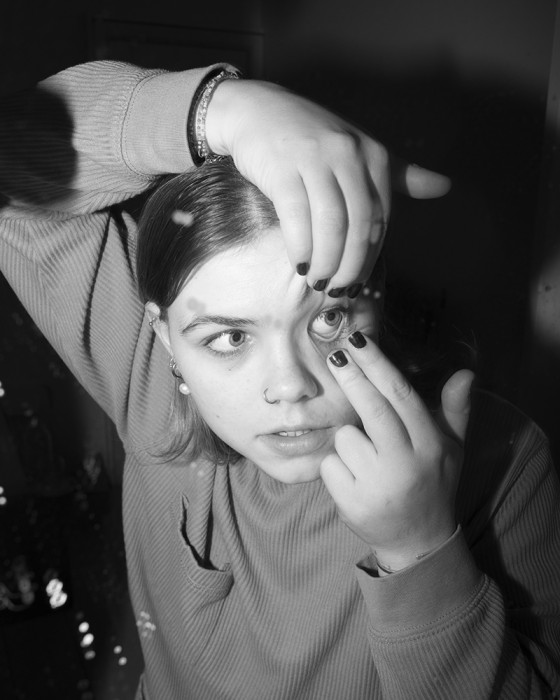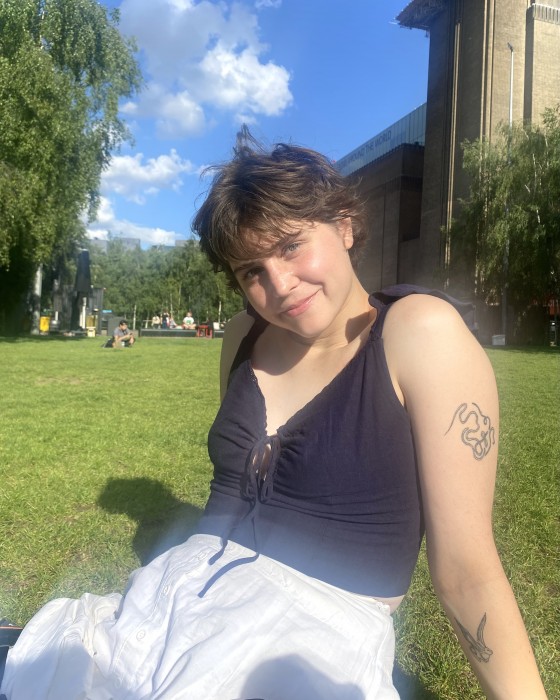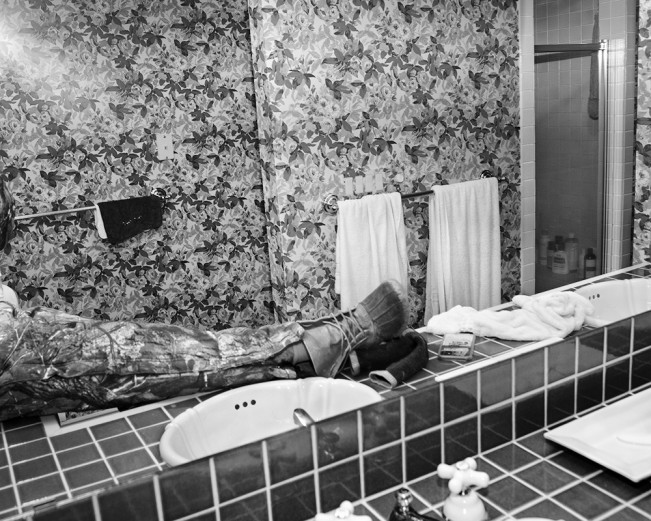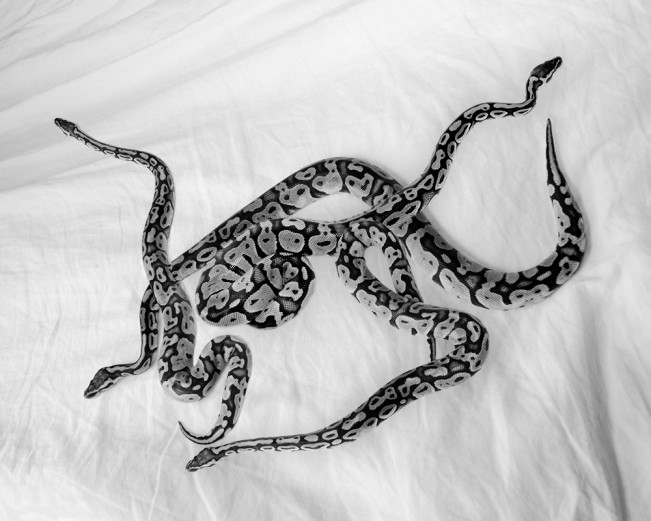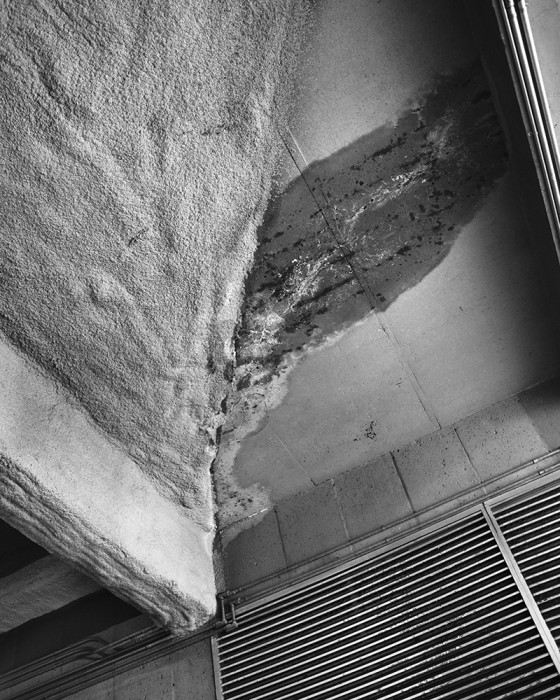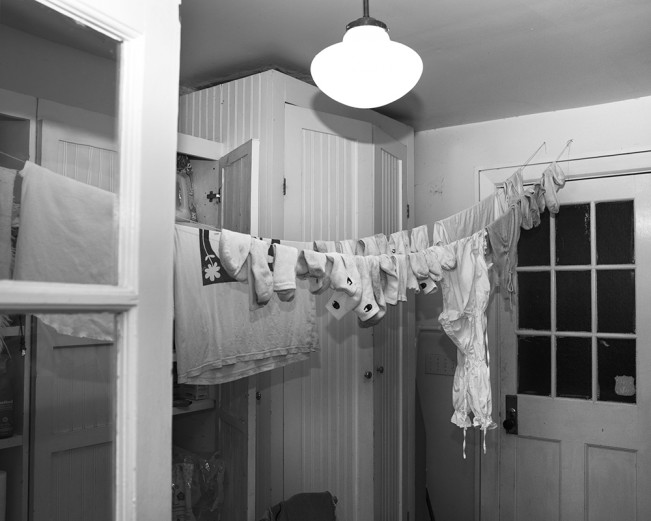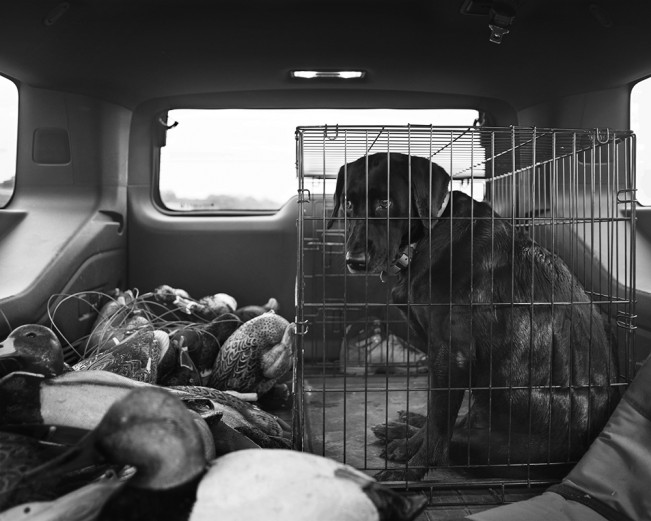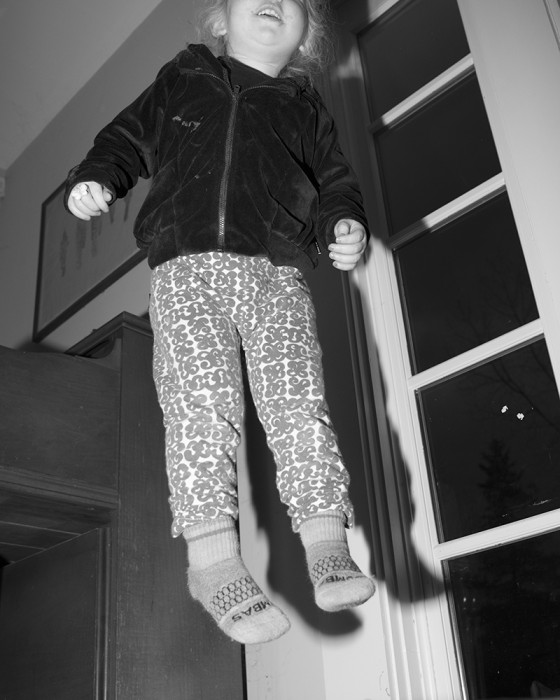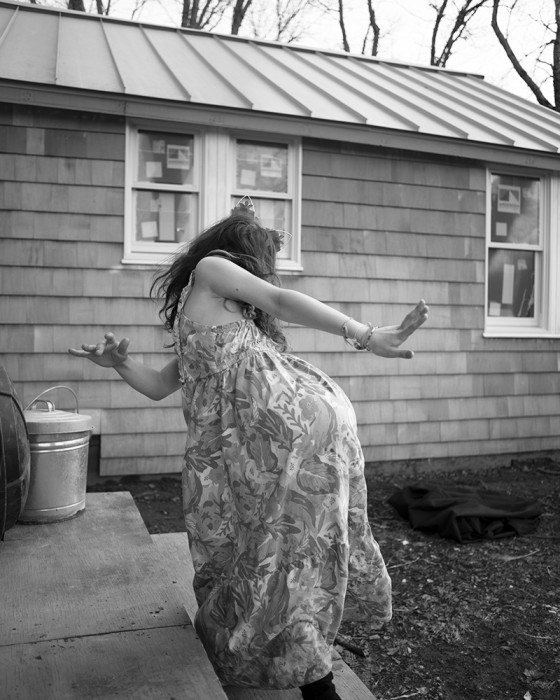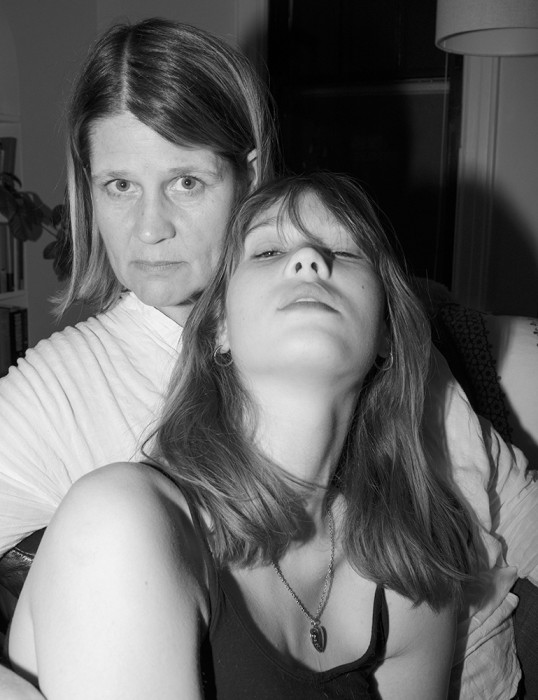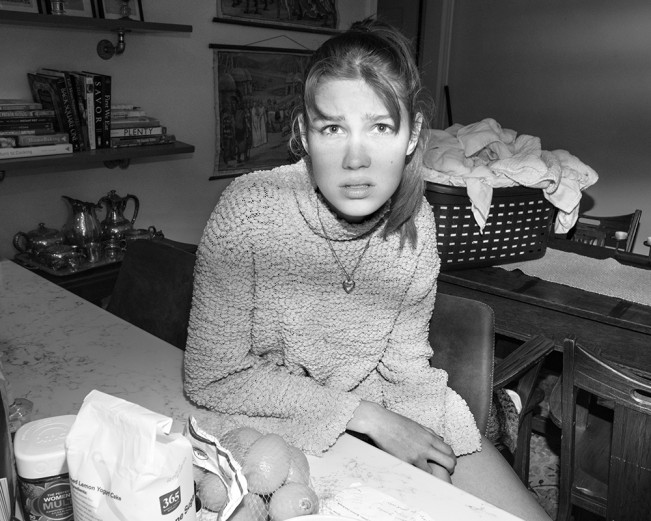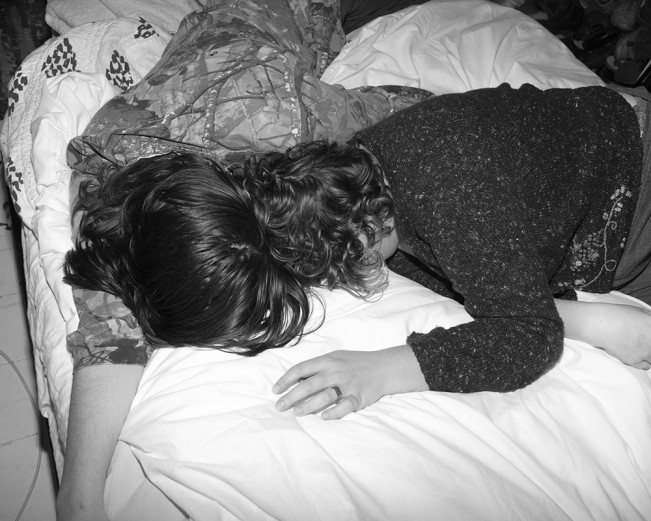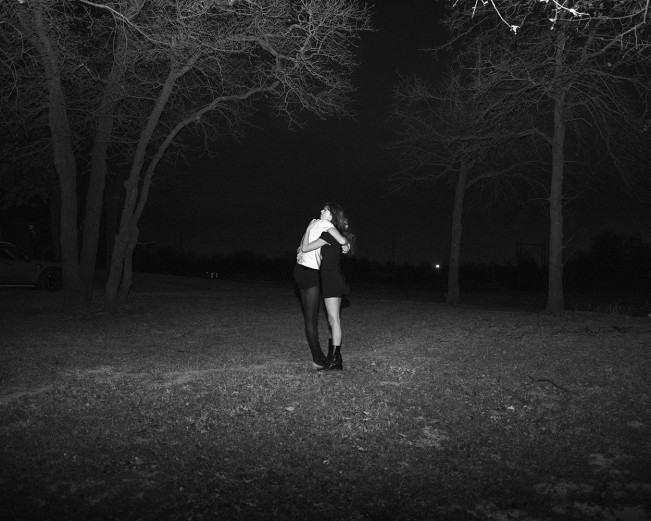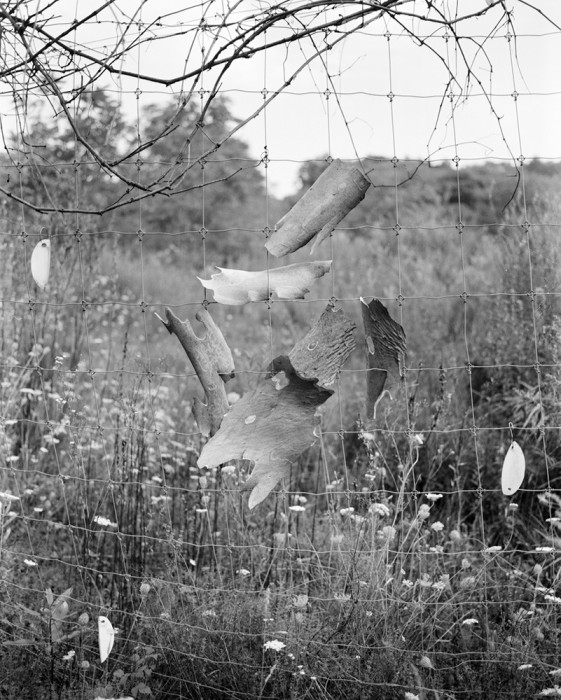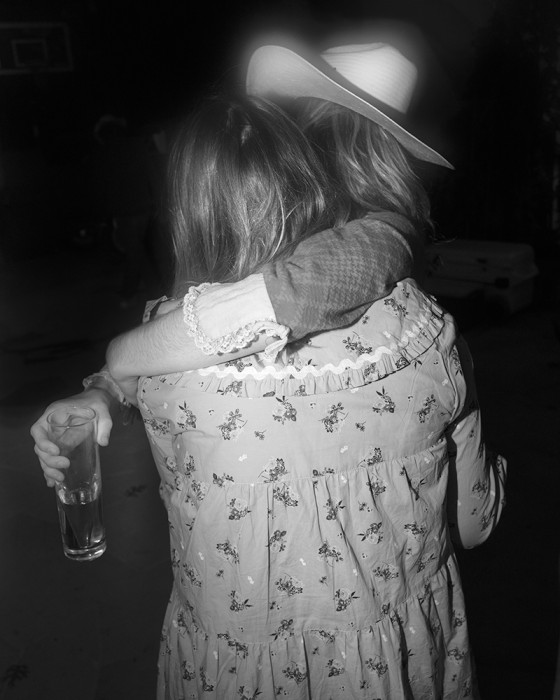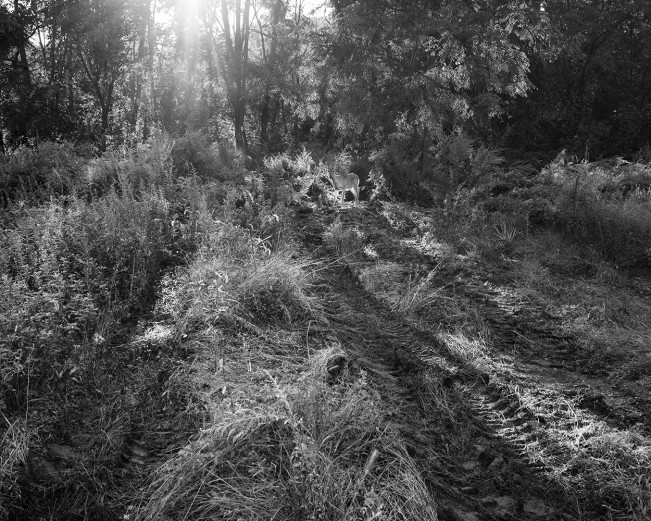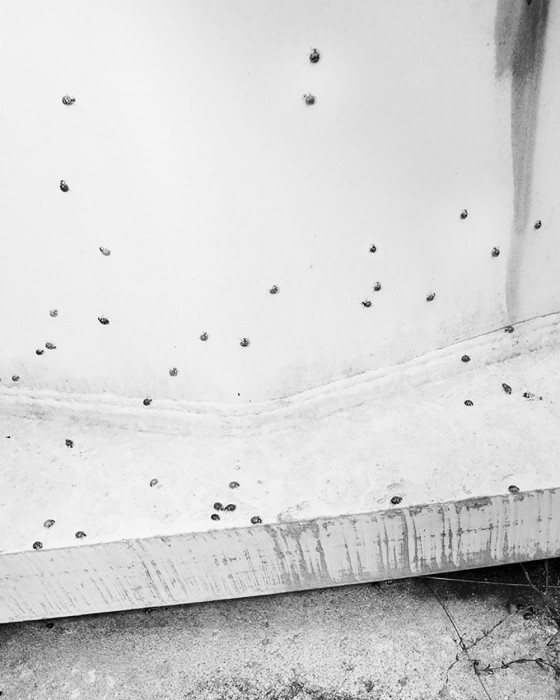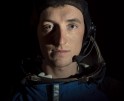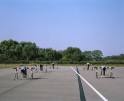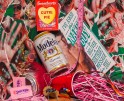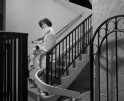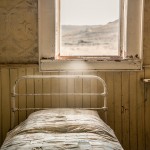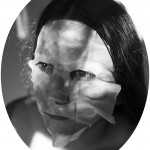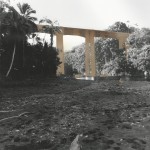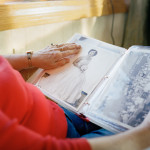The 2022 Lenscratch Student Prize Second Place Winner: Alice Fall
It is with pleasure that the jurors announce the 2022 Lenscratch Student Prize Second Place Winner, Alice Fall. Fall was selected for her lyrical and haunting project, I Went Back to Sit in the sun, and has graduated from Bard this Spring (2022) with a B.A in Photography. The Second Prize Winner receives: a $750 Cash Award, a mini exhibition on the Curated Fridge, and a Lenscratch T-shirt and Tote.
In Alice Falls’s I Went Back to Sit in the Sun, images are alive, the still photographs aren’t still. These are images of movement, of experiences compressed into a second of time, stretching time, even when the images are of things—towers of kudzu, a twirled towel around wet hair, tire tracks in the woods, the earth not quite dry yet. The present is rendered in acts of tenderness, as choreographies of being and feeling that will take on additional contours in the always-to-be-further-delineated future.
The light, interpreted and illuminating, is both found and flashed in these instances of inside/outside, summer/winter, black/white/gray, where X place or person meets Y event, as a spreading water leak stains the ceiling, or as a body bends over, hands touching the floor (slow-moving disasters, private reveries). Fall writes of image making as a “fluid experience.” The surfaces of these portraits—I read them all as portraits—carry currents. They are a flow of patterns, whether in a bedspread or window shades, pieces of clothing or snakes’ skin.
And then there are the expressions on these faces, watchful, skeptical (resistant?), especially when looking directly at the lens. The bodies express themselves in moments of joy, dancing or jumping, and connection, embracing, heads touching. I thought of the women pictured as “characters” and watched how they moved, together and apart, even in repose.
The images required looking and re-looking, as a body, a sequence, a puzzle. I was aware of how my mind was trying to figure out how the pictures created the world they so fully inhabit. The idea of the composite, of how pieces come together in a reader or viewer’s mind, is captured beautifully by Olga Tokarczuk, the author of Flights, in her Nobel Lecture: “So it could be best to tell stories honestly in a way that activates a sense of the whole . . . that sets off the reader’s capacity to unite fragments into a single design, and to discover entire constellations in the small particles of events.”
Part of what compels the looker to look is how spontaneous these photos seem, how improvisational they feel, even as they are clearly composed—as if the camera (a Mamiya 7) felt the moment, and then the eye, the first person, the photographer, Alice, performed a kind of deus ex machina, entering the cave that holds the lens in order to make a photograph with the touch of a finger.
I asked Alice Fall to tell me a bit more about how she approached making pictures, about how she finds their “temperature,” and she replied that she responds most to words and images that “elicit a physical response.” Discerning a temperature allows her “to enter the images with a feeling at the forefront of my headspace. When I am in tune with my body and emotion and the way I physically respond to an image—whether I am making work or engaging with images I’ve already made, my vision is sharpest.”
Most of the pictures in the series were made in Oklahoma, in and around the house where Alice’s sister, Meg, and her mother live. When I remarked on this to Alice, she told me that Meg was one of the most important characters in the series, and in her life; that photographing Meg was an exploration of herself, how their experiences are “intertwined and interdependent.” She added, “When we’re making pictures together, she becomes a character that knows something that I don’t.”
When I thought about this, about what the Meg of the pictures might know that Alice didn’t, I took yet another look at them. I could see how the images might work as a means of locating “self,” not in any fixed, resolved way but as a series of inventions made possible by discovering (and rediscovering) the design in a long sequence of ongoing moments. As Falls writes, “I trace the same images over and over to remember their shape.”
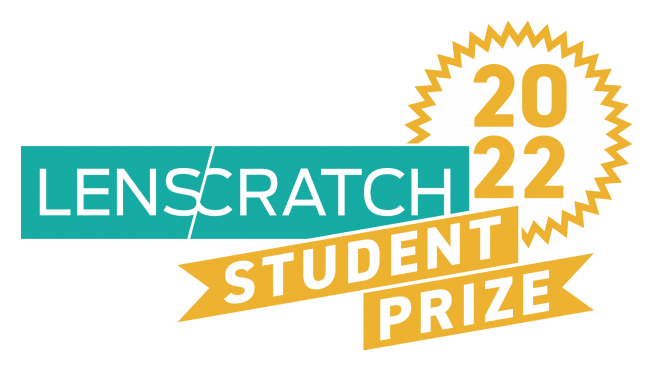 An enormous thank you to our jurors: Aline Smithson, Founder and Editor-in-Chief of Lenscratch, Educator and Artist, Daniel George, Submissions Editor of Lenscratch, Educator and Artist, Linda Alterwitz, Art + Science Editor of Lenscratch and Artist, Kellye Eisworth, Managing Editor of Lenscratch, Educator and Artist, Alexa Dilworth, publishing director, senior editor, and awards director at the Center for Documentary Studies (CDS) at Duke University, Kris Graves, Director of Kris Graves Projects, photographer and publisher based in New York and London, Elizabeth Cheng Krist, Former Senior Photo Editor with National Geographic magazine and founding member of the Visual Thinking Collective, Hamidah Glasgow, Director of the Center for Fine Art Photography, Fort Collins, CO, Allie Tsubota, Artist and winner of the 2021 Lenscratch Student Prize, Raymond Thompson, Jr., Artist and Educator, winner of the 2020 Lenscratch Student Prize, Guanyu Xu, Artist and Educator, winner of the 2019 Lenscratch Student Prize and Shawn Bush, Artist and Educator, winner of the 2017 Lenscratch Student Prize.
An enormous thank you to our jurors: Aline Smithson, Founder and Editor-in-Chief of Lenscratch, Educator and Artist, Daniel George, Submissions Editor of Lenscratch, Educator and Artist, Linda Alterwitz, Art + Science Editor of Lenscratch and Artist, Kellye Eisworth, Managing Editor of Lenscratch, Educator and Artist, Alexa Dilworth, publishing director, senior editor, and awards director at the Center for Documentary Studies (CDS) at Duke University, Kris Graves, Director of Kris Graves Projects, photographer and publisher based in New York and London, Elizabeth Cheng Krist, Former Senior Photo Editor with National Geographic magazine and founding member of the Visual Thinking Collective, Hamidah Glasgow, Director of the Center for Fine Art Photography, Fort Collins, CO, Allie Tsubota, Artist and winner of the 2021 Lenscratch Student Prize, Raymond Thompson, Jr., Artist and Educator, winner of the 2020 Lenscratch Student Prize, Guanyu Xu, Artist and Educator, winner of the 2019 Lenscratch Student Prize and Shawn Bush, Artist and Educator, winner of the 2017 Lenscratch Student Prize.
Alice Fall is an artist living and working between Oklahoma and Upstate New York. She graduated from Bard College in May of 2022 with a B.A. in Photography. She engages with themes of intimacy, absence, memory, family, sexuality, and the impermanence and transformation of these forces. Growing up in Oklahoma led to a questioning of identity and visibility in a place where nonacceptance and acceptance coexist and overlap. Her work is guided by the perpetual tension between identity and place, and by the shedding that is necessary for growth and renewal.
Follow Alice Fall on Instagram: @aliceflanneryfall
I Went Back to Sit in the Sun
The camera perceives things before I can. An image arises from a fleeting encounter of past and present. It performs a deceptive dance with the intangible. I trace the same images over and over to remember their shape.
The sun sweeps across the dead garden and heats the inside air like a greenhouse. The temperature is sweltering; it laps at my skin like warm water. My shoulders begin to burn but I still choose to sit in the sun. I open a window. The room begins to feel familiar; I close my eyes and hum a little. The space between me and the world echoes. Winter air leaks in through cracks around the windows, and I begin to notice pockets of one state inside another: invisibility within visibility, nonacceptance within acceptance, repulsion within attraction, separation within connectedness. Constriction pulses through the space, and these states begin to leak. The core of them, the delicate beauty of them, begins to rot. The interior expands outward, meeting edges and merging. My palms open fully and a momentary formlessness emerges, breaking through the confines and rigidity of order. Renewed and forever renewing; shapeless but in search of new shape.
The sun sets early. Emptiness moves in and saturates the space slowly. The remaining heat lingers and burns out. A low hum radiates from the yellow bulb hanging from the ceiling. It’s the only light on in the house. I move quietly from this room to the next, following voices that become more familiar as I approach. The space around me remains alive and my response changes every moment.
I look through the lens and see my family. All of our identities are filtered and reflected back to me in an endless feedback loop. The complexities of their strength, love, and self-possession are gifts presented to me through their eyes, through the way they drape their arms around each other, and through their emotions and fleeting reactions. The layers are illusive; they overlap and compound in a transformation that embodies multiple realities before becoming something else entirely.
Could you say just a little about where you grew up, where these images were made, and when you started making them? Is the project ongoing?
I moved from Los Angeles to Oklahoma City when I was 8 years old, and I was greatly influenced by my middle and high school years in Oklahoma. These are two entirely different places, and so this transition marked one of my first experiences where I had to redefine my sense of self and place when the familiar was uprooted. The majority of the work in I Went Back to Sit in the Sun was made in Oklahoma, in and around the house where my mom and sister are currently living. The process of making these images began in the fall of 2021 alongside larger class critiques and individual advisory meetings. While the work I showed in May represents a culmination of this past year, I see this project as one that is still very much a work in progress. This summer, I’ve been able to step back from the rigidity of school and critiques, but continue to make work guided by my thesis and final show.
What prompted you to think in terms of seasons—sweltering temps, winter air leaking—and of sunlight, of moving into it? Two different locations equal different states of being, or . . . ?
The writers/ artists / poets who are most influential to me are those who are able to use language and imagery so vividly that they elicit a physical response in my body. The use of temperatures helps me evoke a similar sensation and allows me to enter the images with feeling at the forefront of my headspace. When I am in tune with my body and emotion and the way I physically react to an image– whether I am making work or engaging with images I’ve already made– my vision is sharpest. When I say “the camera perceives things before I can”, I’m talking about the connection between my body/vision and mind. There’s a rush in my body that tells me to make a picture. After that initial reaction I let my mind step in to help me navigate the formal construction of the image.
When I was a child, I was able to count all of my summers on my hands. As I get older, the categorization and compartmentalization of sections of my life and their associations begin to blur and overlap in a disorienting way. I think a lot of this comes back to aging and the tension between witnessing myself and my family age alongside overpowering memories of past selves. My experience of queer identity and visibility in Oklahoma ties into this disorientation of time and place. Everything and everyone is at odds with themselves; I am at odds with myself. Nonacceptance and acceptance overlap and queer identity is at odds with family, place, and belonging.
Who are the other “characters” in the series? When you appear are these self-portraits or do you think about yourself as other, as a character?
My sister, Meg, is one of the most important characters in this series and in my life. Photographing her is both an exploration of her character and an indirect exploration of myself. I am able to see myself at 15, exploring how our identities mirror each other and how many of our experiences are entwined and interdependent. When we’re making pictures together, she becomes a character that knows something that I don’t know. I love never quite knowing what direction she will point me in next.
What brought you to photography?
Years ago, my brother made a black and white print of a lake that we hung in the kitchen. I didn’t understand how so much movement, vastness, and emotion could be conveyed through a still image. He’s one of the reasons I began my awareness and exploration of the world through photography. I’ve played around with different forms of portraiture since high school, but I was not exposed to photography as art until I arrived at Bard. Bard provided community, resources, and the space to be vulnerable and develop a voice.
What kind of camera/film are you using?
For this project I was using a Mamiya 7/Ilford 120 film and a Nikon D850. Now that I’m out of school I’m using a Sony A7ii and my granddad’s old Nikon F.
Posts on Lenscratch may not be reproduced without the permission of the Lenscratch staff and the photographer.
Recommended
-
The 2022 Lenscratch Student Prize Honorable Mention Winner: Mackenzie CalleJuly 31st, 2022
-
The 2022 Lenscratch Student Prize Honorable Mention Winner: Seok-Woo SongJuly 30th, 2022
-
The 2022 Lenscratch Student Prize Honorable Mention Winner: Vicente CayuelaJuly 29th, 2022
-
The 2022 Lenscratch Student Prize Honorable Mention Winner: Daniel HojnackiJuly 28th, 2022
-
The 2022 Lenscratch Student Prize Third Place Winner: Alana PerinoJuly 27th, 2022

